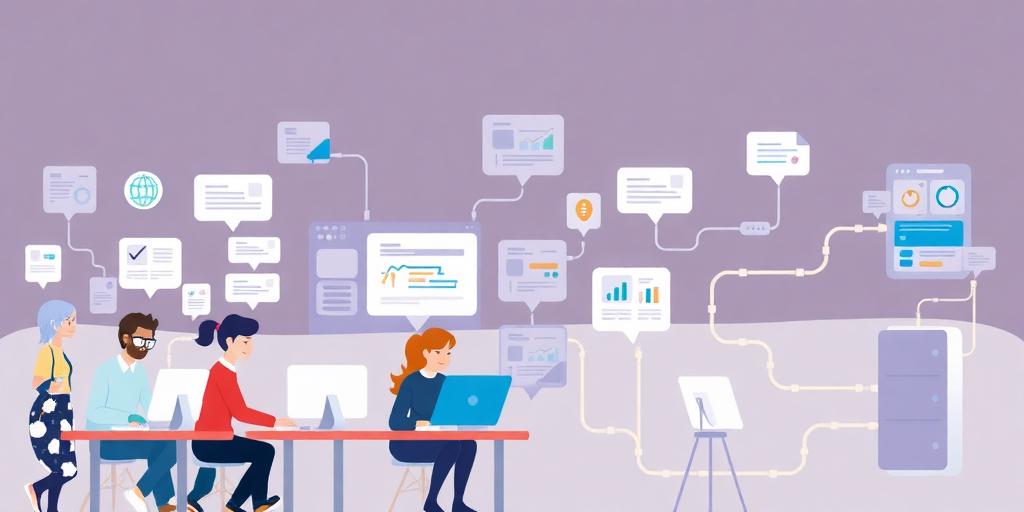The landscape of software development has evolved significantly, transitioning from isolated individual efforts to highly integrated, collaborative team endeavors. In this paradigm, the selection of appropriate tools is paramount for ensuring efficiency, maintaining code quality, and fostering seamless communication. This analysis identifies the top 10 indispensable tools that empower modern software development teams to collaborate effectively, irrespective of geographical distribution.
The Imperative of Collaborative Development Tools
Effective collaboration tools are no longer a luxury but a fundamental requirement. They facilitate streamlined workflows, enhance transparency, and reduce bottlenecks, leading to faster delivery cycles and superior software products. The right toolkit minimizes friction, allowing developers to focus on innovation rather than logistical complexities. This deep dive explores the leading platforms that define excellence in collaborative software development.
Top 10 Tools for Collaborative Software Development
1. GitHub/GitLab: Version Control and Code Management
GitHub and GitLab stand as the bedrock of modern collaborative development. As distributed version control systems built on Git, they provide robust mechanisms for code hosting, version tracking, and collaborative code review via pull requests (GitHub) or merge requests (GitLab). Their integrated features, including issue tracking, project boards, and CI/CD pipelines (especially GitLab), streamline the entire development lifecycle. For effective collaboration platforms for coding, these are non-negotiable.
2. Jira: Agile Project Management
Jira by Atlassian is the industry standard for agile project management and issue tracking. It enables teams to plan, track, and release software with unparalleled visibility. Features like customizable workflows, sprint boards, backlog management, and comprehensive reporting empower development teams to coordinate tasks, monitor progress, and identify impediments swiftly. It is crucial for software development team productivity tools.
3. Slack: Real-Time Communication
Slack has redefined team communication. Its channel-based messaging system allows for organized discussions, direct messaging, and seamless file sharing. Integrations with numerous development tools—from version control systems to CI/CD platforms—centralize notifications and facilitate real-time problem-solving, making it an essential component for remote development teams.
4. Confluence: Knowledge Management and Documentation
Also from Atlassian, Confluence provides a centralized workspace for creating, sharing, and collaborating on project documentation. Teams can manage technical specifications, meeting notes, project plans, and knowledge bases effectively. Its structured pages and real-time editing capabilities ensure that all team members have access to the most current information, critical for maintaining project alignment.
5. Jenkins: Continuous Integration/Continuous Delivery (CI/CD)
Jenkins is an open-source automation server that orchestrates the entire CI/CD pipeline. It automates the building, testing, and deployment of software, ensuring that code changes are consistently integrated and validated. By reducing manual errors and accelerating release cycles, Jenkins is pivotal for maintaining code quality and ensuring rapid, reliable deployments in a collaborative environment.
6. Docker: Containerization for Environment Consistency
Docker revolutionizes collaborative development by providing a standardized way to package applications and their dependencies into portable containers. This eliminates the notorious “it works on my machine” problem, ensuring consistent development, testing, and production environments across the entire team. Docker facilitates seamless onboarding of new developers and minimizes configuration discrepancies.
7. Visual Studio Code (with Live Share): Collaborative Coding
Visual Studio Code, a powerful and lightweight IDE, extends its utility through extensions like Live Share. Live Share enables real-time collaborative coding sessions, allowing multiple developers to edit, debug, and review code together within the same editor instance. This capability significantly enhances pair programming and remote code collaboration, making it one of the best tools for remote development teams.
8. Sentry: Real-Time Error Monitoring
Sentry provides real-time error tracking and performance monitoring for applications. It automatically identifies, prioritizes, and resolves issues by providing detailed context about errors as they occur in production. For collaborative teams, Sentry's shared dashboards and alerting mechanisms ensure that critical bugs are addressed promptly and transparently, fostering a proactive approach to quality assurance.
9. Microsoft Teams: Integrated Collaboration Suite
Microsoft Teams offers a comprehensive suite for team collaboration, integrating chat, video conferencing, file storage, and application integration. Its deep integration with Microsoft 365 services makes it a powerful choice for organizations already within the Microsoft ecosystem, providing a unified platform for communication and productivity that rivals dedicated collaboration tools.
10. Postman: API Development and Testing Collaboration
Postman simplifies the API development lifecycle for individual developers and teams. Its collaborative features, such as shared workspaces, version control for API collections, and commenting capabilities, enable teams to design, test, and document APIs together efficiently. This ensures consistency and quality in API interactions, a critical aspect of modern distributed systems.
Conclusion
The effective deployment of collaborative software development tools is fundamental to the success of contemporary engineering teams. The platforms highlighted—ranging from robust version control systems to integrated communication hubs and specialized debugging solutions—collectively form a powerful ecosystem. By strategically leveraging these tools, organizations can foster an environment of high productivity, transparency, and innovation, ultimately driving the creation of superior software products.









